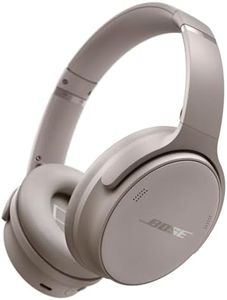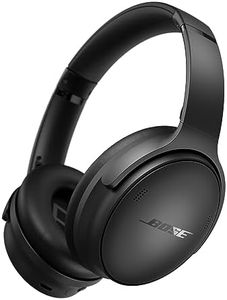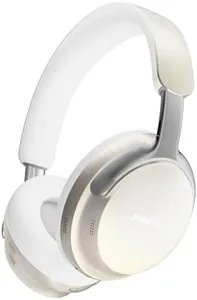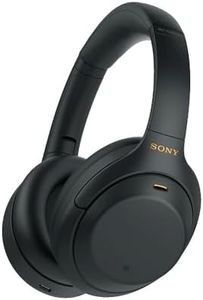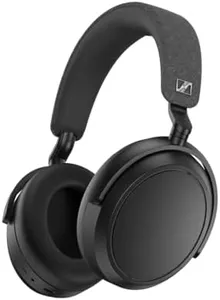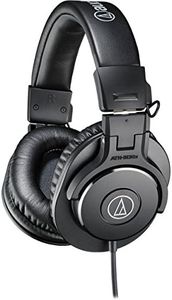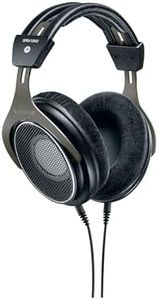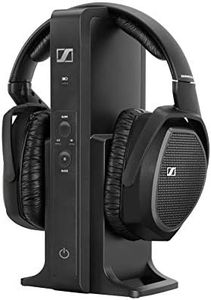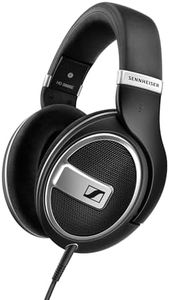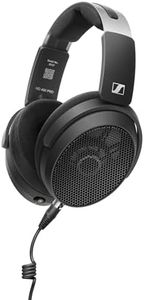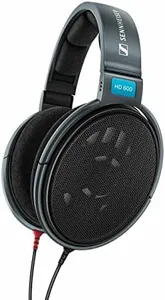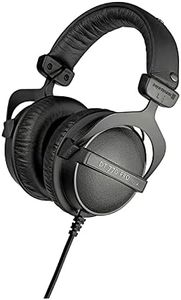We Use CookiesWe use cookies to enhance the security, performance,
functionality and for analytical and promotional activities. By continuing to browse this site you
are agreeing to our privacy policy
10 Best Headphones For Video Editing
From leading brands and best sellers available on the web.Buying Guide for the Best Headphones For Video Editing
When choosing headphones for video editing, your main goal is to select a pair that delivers accurate, clear, and balanced sound. This helps you detect subtle audio details, hear dialogue crisply, and precisely mix or balance soundtracks. Comfort is also key, since editing sessions can be long, and you want headphones that suit your workspace and working style. Understanding the main specifications will help ensure you pick headphones that match your needs and workflow.Sound Profile (Frequency Response)The sound profile, often described as frequency response, refers to how faithfully headphones reproduce audio across low (bass), mid, and high (treble) frequencies. For video editing, a flat or neutral response is preferred, as it gives an accurate representation of your project's audio without exaggerating any part of the sound. Some headphones boost bass or treble, which can make music or effects sound exciting but may mask flaws or details. If you work with dialogue or need precision, look for headphones with a flat or reference sound, often marketed as 'studio' or 'monitor' headphones. This ensures the decisions you make in your edit will translate well to other listening environments.
Comfort and FitComfort is critical because you may wear headphones for hours at a stretch. The main types are over-ear, on-ear, and in-ear. Over-ear headphones surround your ears and usually provide good comfort and sound isolation for long sessions. On-ear headphones rest on your ears and can be lighter but less comfortable for extended use. In-ear headphones are compact but might not be ideal for long editing sessions. Look for features like padded ear cushions, adjustable headbands, and lightweight designs. If you wear glasses or need to move around a lot, try to test-headphones first when possible to ensure no discomfort arises over time.
Open-Back vs. Closed-Back DesignOpen-back headphones have perforated ear cups that allow air and sound to pass through, creating a more natural and spacious soundstage, which can help with critical listening and hearing subtle details. However, they allow sound to leak in and out, which can be distracting in noisy environments. Closed-back headphones isolate better from outside noise, prevent audio from leaking, and are a better choice if you're working in shared or noisy spaces. If you're editing in a quiet studio, open-back might be more pleasing and accurate, but in busy or shared environments, closed-back will keep your focus on your project.
Impedance and Power RequirementsImpedance tells you how much power headphones need to reach proper volume and sound quality. Low-impedance headphones (below 50 ohms) work well with computers, laptops, or mobile devices, while high-impedance headphones (above 80 ohms) are designed for professional audio interfaces or headphone amplifiers. For most video editors working from a computer or simple audio interface, low- to mid-impedance headphones offer enough performance and convenience, while higher-impedance models benefit those with dedicated studio equipment.
Wired vs. WirelessWired headphones connect directly to your device and generally provide a more reliable, latency-free audio experience essential for video editing, where audio and video sync must be exact. Wireless headphones offer convenience and mobility, but their slight delay and occasional interference can make them less suited for precise editing tasks. For most video editors, a wired set is the safer bet to ensure what you hear is accurate and perfectly in sync with your editing timeline.
